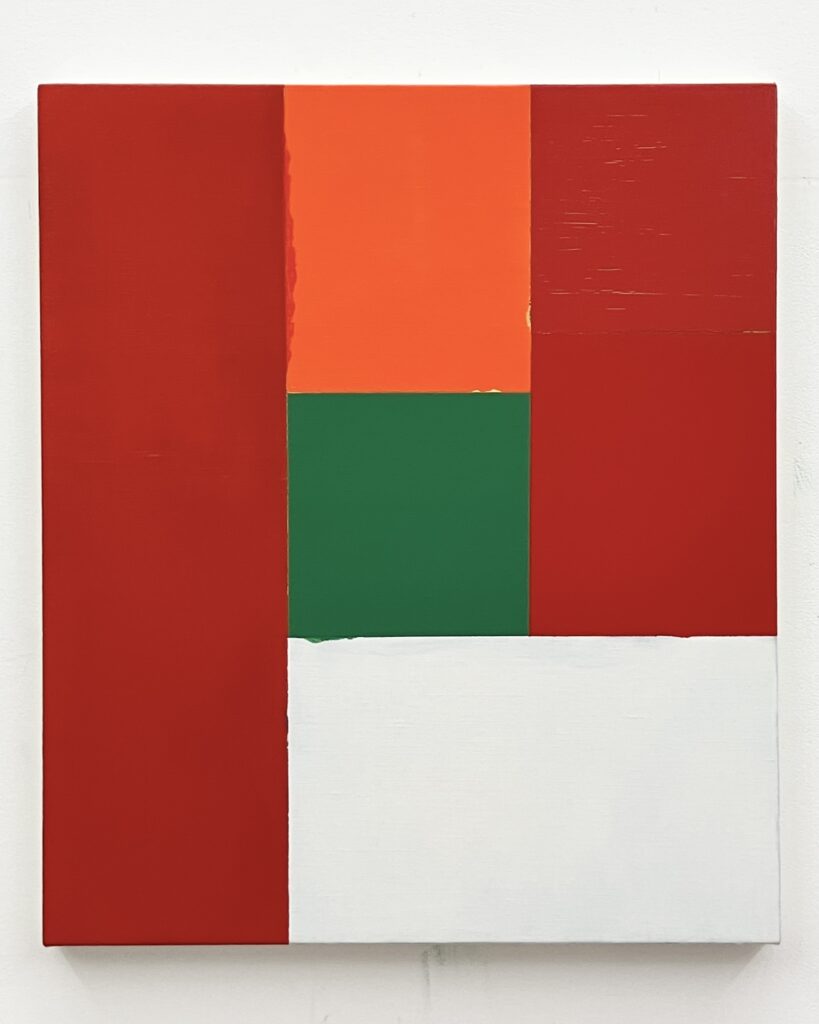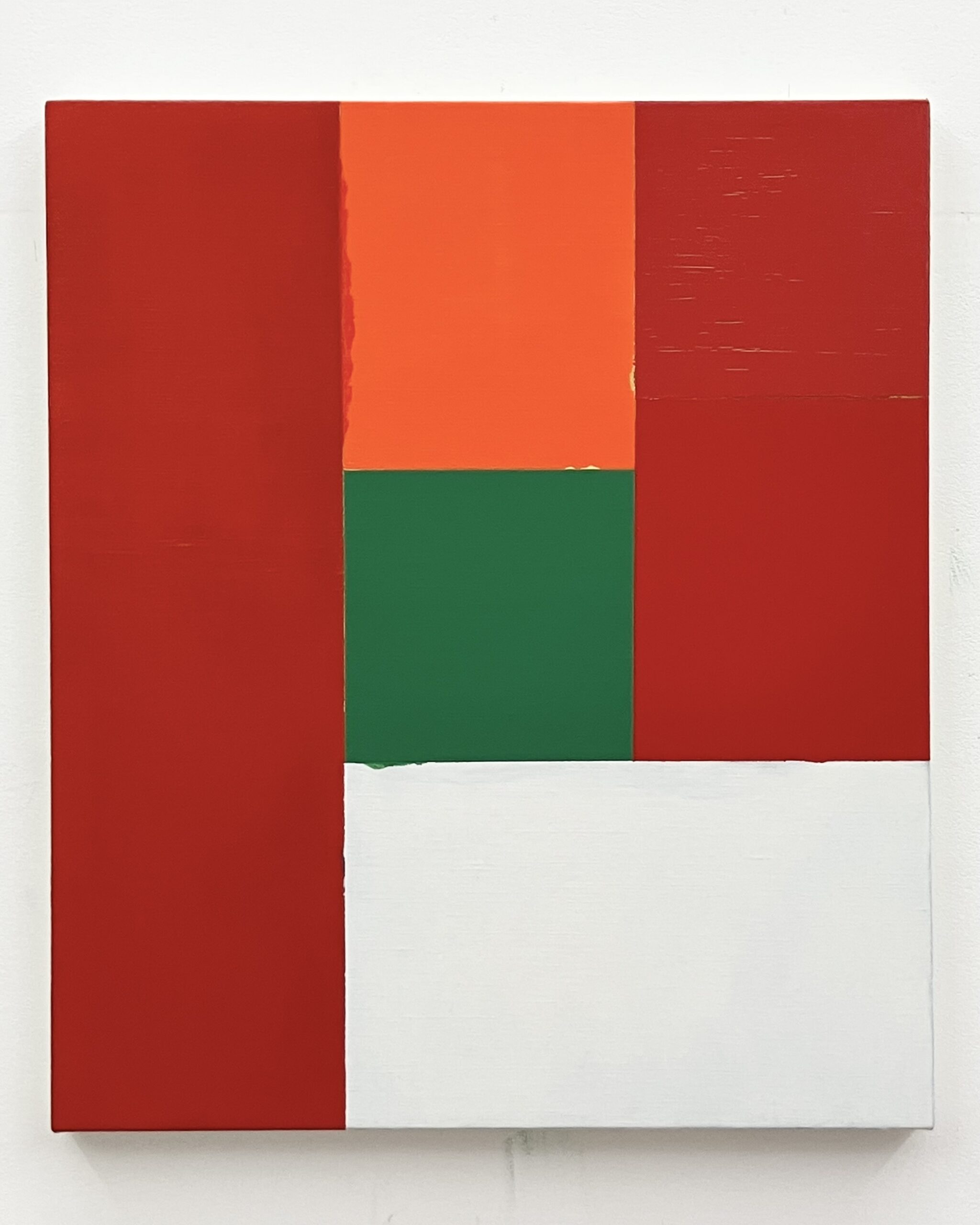Osa Seiichiro’s paintings construct the picture plane through color fields composed of quadrilateral forms. Behind this practice lies a distinctive worldview called “ken” (圏), which indicates a certain territory or unity, as we see in words like “shutoken” (metropolitan area) or “ken-gai” (outside the sphere). Just as the earth is a structure built up through geological layers, Osa creates a temporal and multi-layered world by applying paint in layers. This concept of “ken” functions beyond mere formal techniques—it operates as a production logic that includes ontological questions: specifically, “What is existence?” and “How does existence generate and unfold?”
What I find particularly interesting is his insight about the relationship between haiku and painting. While Osa himself composes haiku, he says that “haiku and painting exist in different dimensions.” This statement does not simply point to differences in expressive media, but reveals a deep insight that includes the complexity of temporality in haiku. Haiku is poetry that crystallizes the “now” moment, yet within that moment, multi-layered temporal sensations of past and future are woven together. The instantaneous condensation of words expresses the convergence of diverse temporal layers into the “now,” possessing a richer temporality than mere immediate moments. On the other hand, painting constructs the world by temporally accumulating material layers of paint, creating a visual expansion of time.

What draws my attention is the dual consciousness of seeing the picture plane as material versus seeing it self-consciously as painting. This relates to the concept of “self-aware painting” that I have developed through my experience running a gallery. Viewers first recognize the surface where quadrilateral color fields are materially arranged, observing in detail the texture of the paint, boundaries, and the influential relationships between colors. But gradually, a self-awareness emerges that “I am looking at a painting,” and at that moment, those color fields exist and manifest as painting. This shift in recognition is precisely the process of “manifestation of existence” that ontology questions, while also being a purely visual and physical experience.
What is even more important is that Osa’s practice refuses the binary opposition of abstract versus figurative. The geometric form of quadrilaterals appears abstract at first glance, but it is an expression of the concrete and multi-layered world recognition called “ken.” Just as geological strata are neither abstract nor figurative, Osa’s color field compositions are positioned in a place that transcends existing categories.
Osa’s method of emphasizing the materiality of paint while treating it not merely as material but as a fundamental element for constructing the world shows that the production process itself is a philosophical ontological exploration. The repetition of quadrilaterals is not mechanical, but rather a temporal and physical practice of re-experiencing the earth’s generative process, and this forms the mode of existence of the work.
This review considers Osa Seiichiro’s painting practice through the lens of his unique concept of “ken” (sphere/territory), examining how his layered approach to color and form creates both material presence and conceptual depth. The analysis draws connections between temporal experiences in haiku poetry and the accumulative time embedded in painting’s physical layers, while exploring the dual consciousness required to experience his work both as material object and as self-conscious artistic statement.
